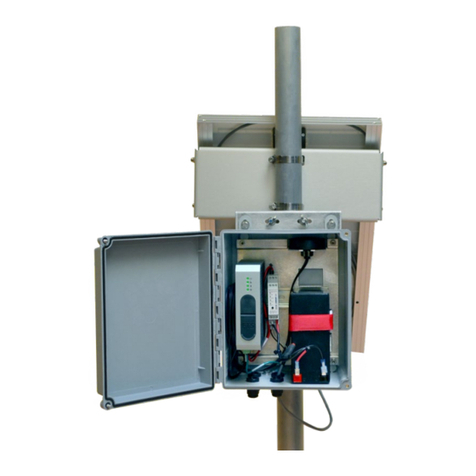
ii
3.2.1 USING THE APP WITH AN ANDROID DEVICE........................................................................... 15
3.3 PRIOR TO PROCEEDING TO THE FIELD............................................................................................. 15
3.4 SYNCHRONIZING THE APPLICATION................................................................................................ 15
3.5 WORKING ONLINE............................................................................................................................. 16
3.6 WORKING OFFLINE............................................................................................................................ 17
3.7 PASSWORDS ...................................................................................................................................... 17
3.8 STATION DISCOVERY AND CONNECTING TO A STATION................................................................ 17
3.9 STATION DASHBOARD ELEMENTS.................................................................................................... 18
3.9.1 ADDITIONAL MENU ITEMS....................................................................................................... 19
3.9.2 SWITCH ENVIRONMENTS......................................................................................................... 19
3.9.3 CLEAR APP DATA ...................................................................................................................... 19
3.9.4 STATION INFORMATION AND HEALTH ICONS........................................................................ 20
3.9.5 SENSOR INFORMATION ICONS................................................................................................ 21
3.9.6 ACTION BUTTONS .................................................................................................................... 22
3.10 EDIT STATION SCREEN...................................................................................................................... 22
3.11 STATION DISCONNECTION............................................................................................................... 22
4.1 COMPONENTS................................................................................................................................... 23
4.2 REQUIRED TOOLS.............................................................................................................................. 23
4.3 GENERAL............................................................................................................................................ 24
4.4 POWER REQUIREMENTS ................................................................................................................... 24
4.4.1 POWER IF USING FT7x2 RS-485 WIND SENSOR HEATER OPTION.......................................... 24
4.5 POWER TERMINAL BLOCK WIRING DIAGRAM.................................................................................. 25
4.5.1 WIRING DIRECT TO BATTERY ................................................................................................... 25
4.5.2 WIRING WITH A SOLAR PANEL AND SOLAR REGULATOR....................................................... 25
4.5.3 GROUNDING THE LT1 .............................................................................................................. 25
4.6 CONNECTING CELLULAR TELEMETRY .............................................................................................. 26
4.7 CONNECTING SATELLITE TELEMETRY .............................................................................................. 26
4.8 CONNECTING SENSORS.................................................................................................................... 26
4.8.1 CONNECTING A TIPPING BUCKET (RAIN GUAGE) ................................................................... 27
4.8.2 FT742 RS-485 WIND SENSOR HEATER OPTION....................................................................... 27
4.9 MOUNTING THE LT1 ......................................................................................................................... 27
4.10 LED STATUS INDICATORS.................................................................................................................. 27
5.1 PRIOR TO GOING TO THE FIELD ....................................................................................................... 28
5.2TESTING THE LT1............................................................................................................................... 28
5.2.1 TESTING THE LT1-CELL............................................................................................................. 28
5.2.2 TESTING THE LT1-GOES ........................................................................................................... 29




























